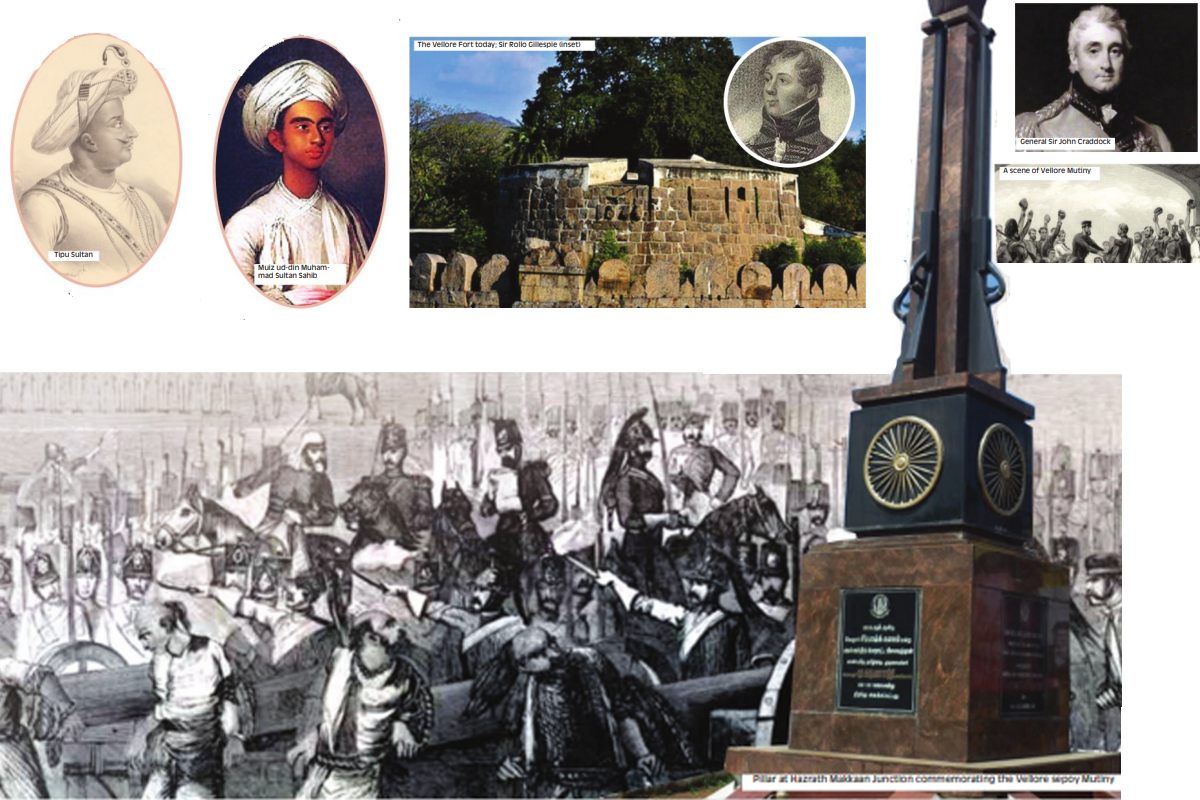Nehru thought Indians were lazy, didn’t have brains: PM Modi
Modi quoted a speech by Nehru from the ramparts of the Red Fort to bolster his claim.
The “Vellore Mutiny” of 1806 is one of the earliest examples of India’s resistance against the British. The mutiny, which began on 10 July, 1806, was the first time Indians expressed their resentment against the British. On the 213th anniversary of the rebellion, Sahapedia’s Manan Kapoor takes a look at the revolt and its significance. He recounts how the 1806 “Vellore Mutiny” set the stage for the 1857 “Sepoy Mutiny.”

PHOTO: STATESMAN NEWS SERVICE
The “Mutiny” of 1857 was a significant event in Indian history that led to numerous uprisings against the British. While the revolt, which began in Meerut, was called the “Indian insurrection” by the German philosopher Karl Marx ~ who wrote about it in the New-York Tribune ~ Jawaharlal Nehru and V D Savarkar called it the “First War of Independence”. Though the 1857 rebellion is often remembered as the first cry against British imperialism, not many know that it was, in fact, the “Vellore Mutiny” of 1806 that was the first time that the deep-seated resentment against the British, coupled with the political goings-on at the time, led to a rebellion.
Mysoreans in exile
In 1799, the British troops, with help from the Nizams of Hyderabad, took over the kingdom of Mysore from Tipu Sultan after the Siege of Seringapatam (an anglicised version of Srirangapatnam) ~ an event which turned the river Kaveri sanguine. After Tipu Sultan was killed on 4 May 1799, the British handed over Mysore to the Wodeyars (former rulers of Mysore). Tipu’s children and their families were exiled to Vellore. Soon, though, this strategy would come back to haunt them.
Advertisement
In Tiger of Mysore:The Life and Death of Tipu Sultan, Denys Forrest notes that Tipu’s children, their families and “innumerable servants” formed a community of “Mysoreans in exile, which numbered up to 3,000 souls and spilt over a considerable area around Vellore”. Tipu’s progeny soon began conspiring to avenge the death of their father and leader.
The insurrection
On 14 November, 1805, six years after the bloodied battle at Seringapatam, an order was issued by Sir J F Craddock, Commander-in-Chief of the British troops, detailing the new dress code. According to the order, the sepoys had to dress in a uniform, shave their facial hair, they could no longer mark their castes and were forced to wear a leather turban that had a cockade made from cow hide. Though the order was passed to bring in uniformity, the “upper-caste” Hindu sepoys objected to wearing a leather headgear, stating that thus would get them excommunicated from their castes.
When 21 sepoys from the 2nd Battalion, 4th Regiment expressed their resentment, they were subjected to corporal punishment, and faced public lashing at Fort St George in Madras (now Chennai). However, scholars such as K K Pillay state that similar dress regulations were introduced in “Hyderabad, Bellary, Wallajabad, Bangalore and Nundidrug”, that it was “doubtful whether these regulations alone served as the cause of the Vellore Mutiny”. He insisted that the presence of Tipu Sultan’s children in Vellore was “the fundamental factor which gave a shape to the rebellion”.
The crimson tide
On the morning of 10 July, 1806, the sepoys attacked the Vellore Fort and a massacre followed, in which more than 100 British soldiers were killed ~ many of them shot while they were asleep.
The British flag was brought down by the sepoys and Tipu’s flag, which was handed over to them by Tipu’s third son Mozeeuddin, was hoisted. K K Pillay, in his paper, “The Causes of the Vellore Mutiny”, wrote that it “was Mozeeuddin, who orchestrated the attack in order to escape Vellore to go to Madras, where his supporters were awaiting the return of the family. When a British cavalry from Arcot town reached the fort, it was already in possession of the mutineers. Soon, though, most of them were killed by the British forces and the rebellion was crushed. John Blakiston ~ an officer in the relief force commanded by Sir Rollo Gillespie that had arrived to regain the possession of the fort ~ later recounted that more than 800 bodies of sepoys were carried out of the fort “besides those who were killed after they escaped through the sally-port”.
In Twelve Years’ Military Adventure in Three Quarters of the Globe, he detailed the events of the day, mentioning that “upwards of a hundred sepoys, who had sought refuge in the palace, were brought out and, by Colonel Gillespie’s order, placed under a wall, and fired at with canister-shot from the guns till they were all dispatched”. Though the “Vellore Mutiny” is often overshadowed by the events of 1857, it shook Britain and, eventually, the officers deployed at the fort were questioned about their intentions of introducing the changes that resulted in the revolt. But as Mark Twain said, history often rhymes, and about 50 years later, the British made a similar decision to introduce Enfield P53 rifles, which came with pre-greased cartridges made of the tallow from beef and pork fat, leading to the revolt of 1857. While the history books all cover the 1857 “Mutiny”, not many have read of the “Vellore Mutiny” ~ one of the most important and early examples of Indian resistance against the British rule ~ that preceded it by half a century, and one that served as a portent of the things to come.
This article is part of Saha Sutra on Sahapedia, an open online resource on the arts, cultures and heritage of India.
Advertisement